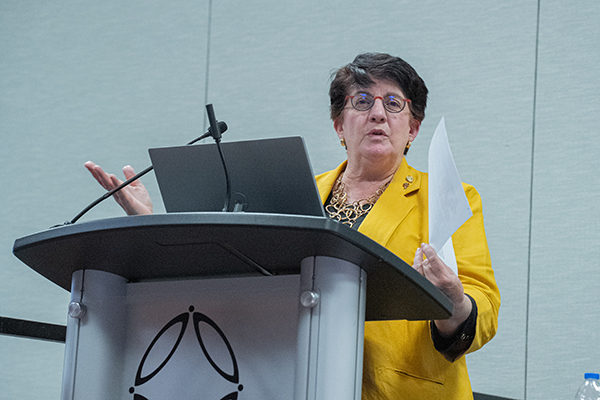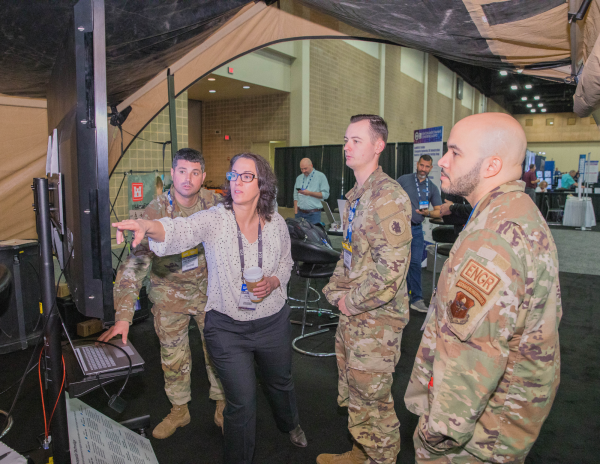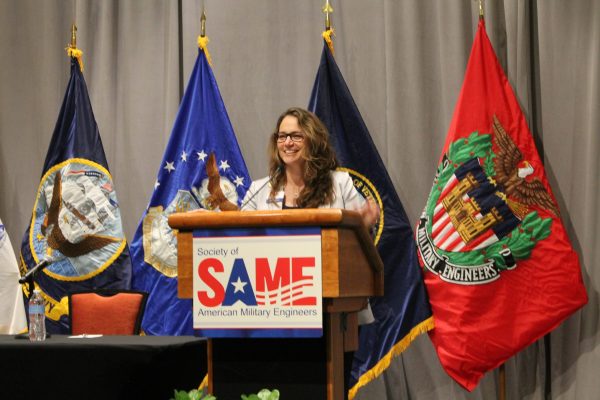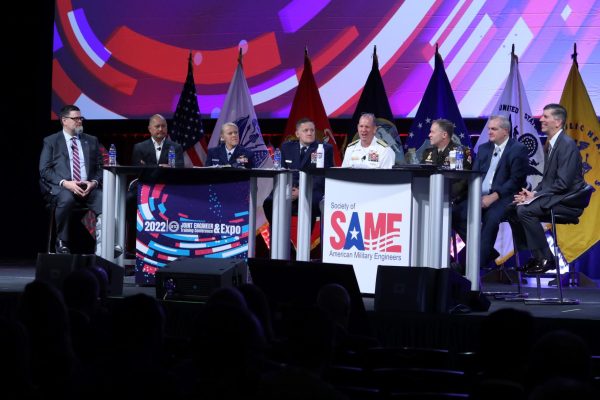Industry-Government Engagement
As the cornerstone on which the Society was founded in 1920, industry-government engagement remains “mission-essential” for the organization a century later, as the first goal of the 2025 SAME Strategic Plan.
With members representing diverse technical and socio-demographic backgrounds, SAME is a multi-disciplined organization that is uniquely positioned to address the engineering-related challenges the nation faces. With institutional stakeholders representing all corners of the A/E/C industry, including large and small businesses, federal, state and local agencies, academia and other professional organizations, the Society is able to see challenges across the board that affect delivery of national security projects and products.
Finally, through a focus on collaboration, unique Post structure, and relationships at the local, national, and even international levels that go back decades, SAME provides an inclusive forum within which government and industry can come together to identify and resolve challenges.
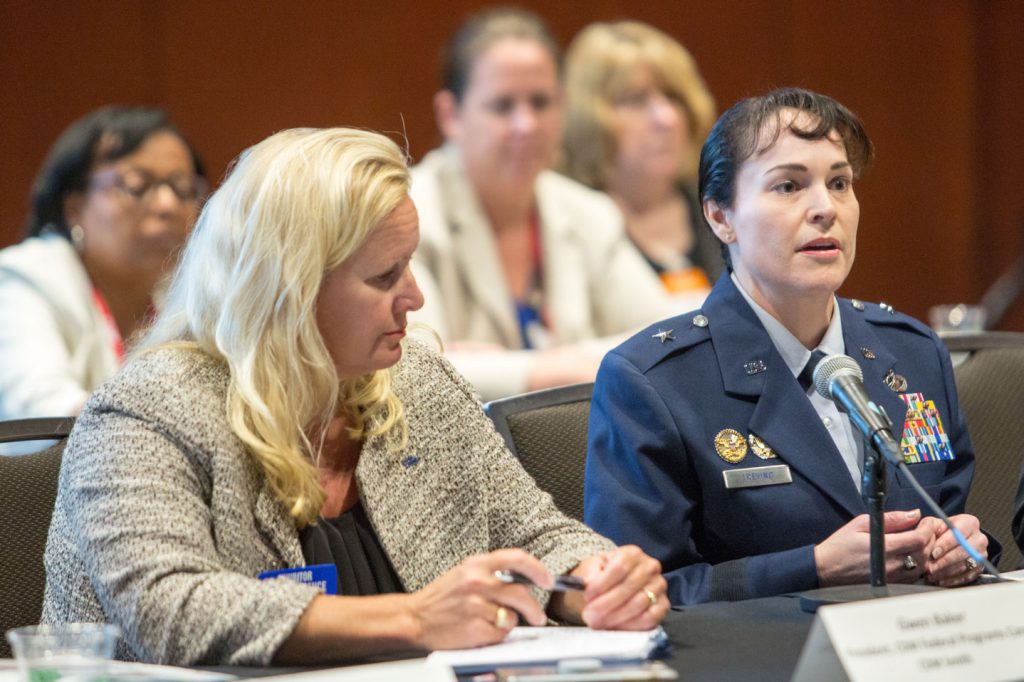
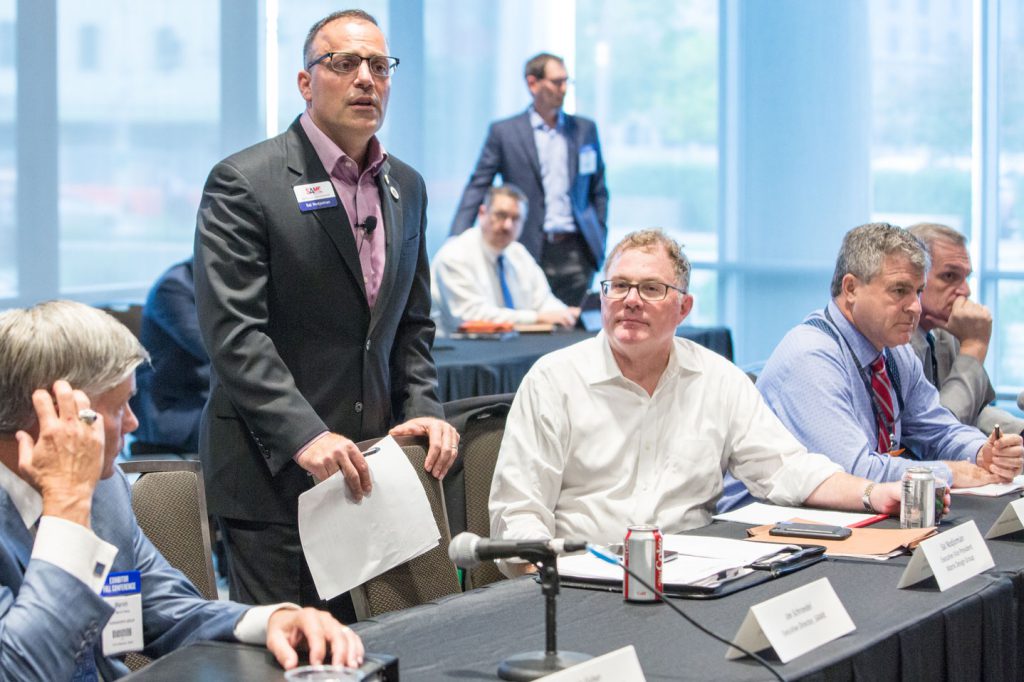
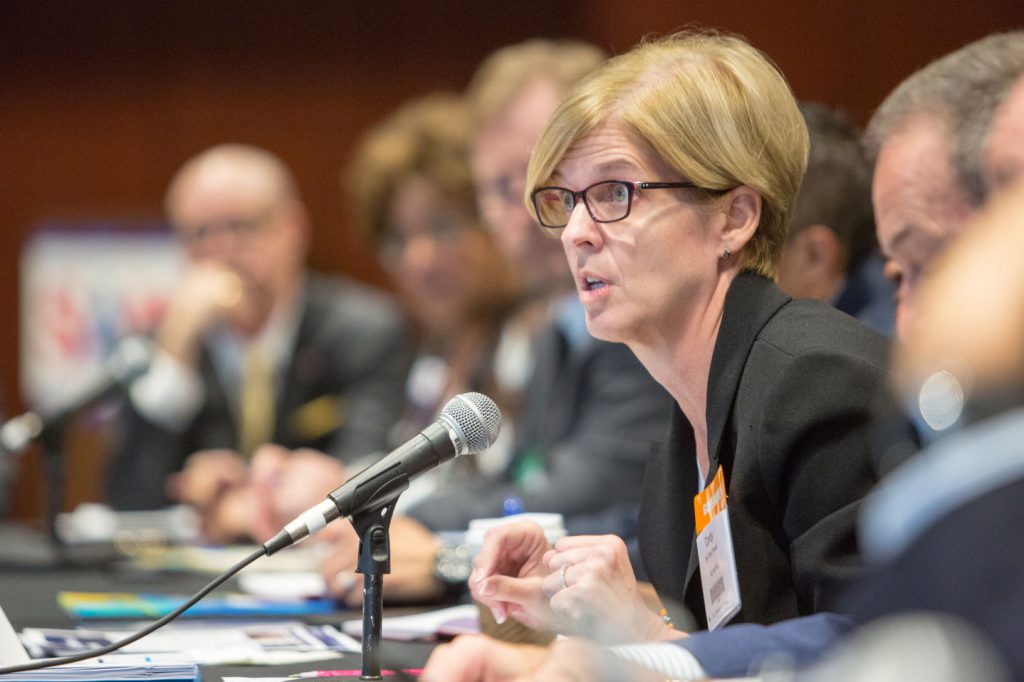
Addressing Critical Issues
In recent years, SAME’s IGE projects have successfully addressed issues such as SDVOSB certification, partnering, and alternative delivery methods. These have enabled members to apply their technical expertise and thought leadership and to collaborate with others across complementary fields of discipline.
Earlier IGE efforts such as public-private partnerships and alternative financing also were summarized in SAME Perspectives—informative reports that shared lessons learned, outcomes, and progress to the broader military engineering community, a practice national leadership intends to restart as the “capstone” to each project as they conclude.
Project Selection Process
In September 2021, the SAME Executive Committee approved a new selection process for national-level IGE projects that will provide deliberateness, consistency, repeatability, transparency, and legitimacy. This formalized evaluation will ensure we deliver impact and maximize the use of available resources to achieve the goals of the 2025 SAME Strategic Plan.
Submissions will be collected from several sources, including the Executive Advisory Group (Engineering Service Chiefs and senior federal leaders), CEO Roundtables, Communities of Interest, Posts, strategic partners, and others. Submissions will be presented to the Executive Committee for scoring, approval, and action by member volunteers (subject matter experts). Currently, there are 10 IGE projects underway, three of which were recently approved by the Executive Committee following adoption of the new selection process.
Making A Measurable Impact
Throughout SAME’s first century, the Society was instrumental in creating opportunities for individuals and organizations to become familiar with each other, allowing each party to prosper and build lasting relationships. It is time to apply that trust in redoubling our support of national security.
Now in SAME’s second century, in addition to our enduring legacy of bringing people together, the Society has the opportunity to impact some of the pressing issues of the day through IGE. Strengthened by the technical expertise of our membership; a diversity of thought, perspectives and experience; and a shared commitment to service, we are embracing that responsibility.
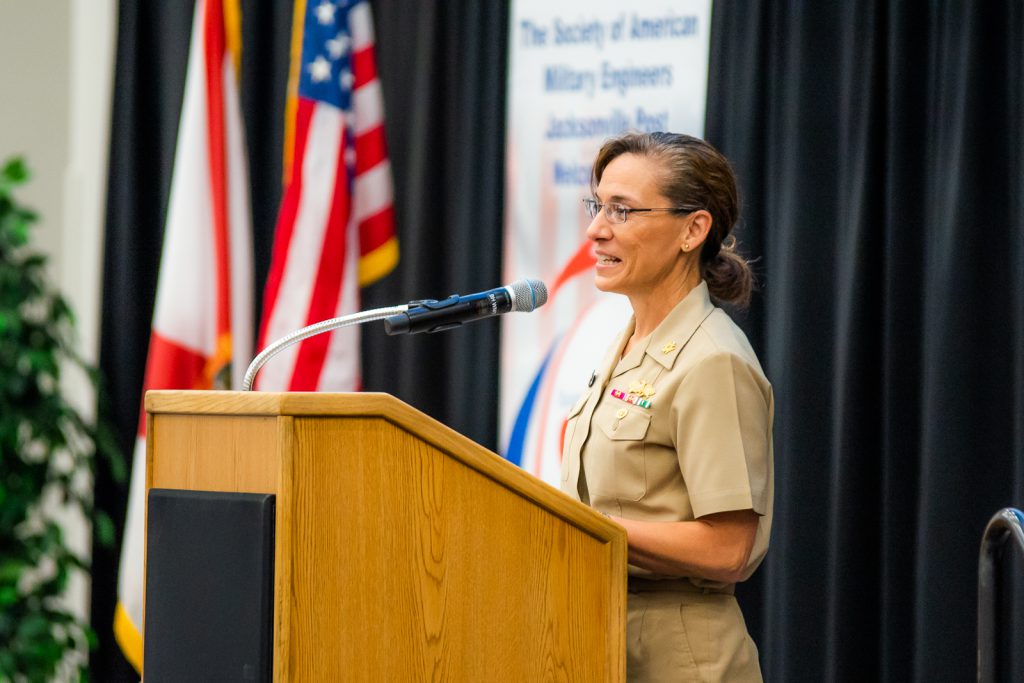
The IGE Blueprint
In addition to the local outreach conducted by our Posts, SAME is addressing many other pressing issues such as CPARS, PFAS, alternative delivery methods, and cybersecurity through our national IGE project framework.
During the 2022 Small Business Conference, SAME also facilitated new listening sessions with agency partners, allowing for intentional conversations between industry members and government leaders on pressing issues and concerns. In addition, the conference marked one of the semi-annual meetings of the Executive Advisory Group to discuss shared areas of interest where we can play a role in resolution.
SAME’s unique network of Posts, with their century-long track record of forging relationships at the local level, coupled with a strong infrastructure through Communities of Interest that can leverage technical expertise at a national scale, offers a blueprint for the future of IGE.
Current IGE Project Summaries
Project Manager: Miro Kurka, Mead & Hunt Inc.
Project Start: March 2019
Planned Finish: May 2021
Current Status: Nearing Completion
Key Stakeholders:
A/E/C Firms, U.S. Army Corps of Engineers, Air Force Civil Engineer Center, Naval Facilities Engineering Systems Command, Office of the Secretary of Defense (Construction)
Background:
Cost engineering for construction is a major challenge to Department of Defense agencies, notably USACE, NAVFAC, and AFCEC. Independent cost estimates, acceptable construction pricing, and the authorized amount for projects often vary to such an extent that projects are not awardable without significant delay or re-work. These delays, cancellations, and financial overruns can put national security at risk. This IGE effort began first within the SAME Tulsa Post, where it was examined at the local level. The takeaways from that event in 2019 and subsequent discussions and considerations led the topic to become featured during the 2019 SAME CEO Roundtable at SBC that November. Follow-on efforts, forums, and coordination to bring awareness and perspectives continued over the next two years, including as sessions at the 2020 Virtual JETC and 2021 Virtual Capital Week. Project findings were presented to the SAME Executive Advisory Group in November 2021. Publication of an SAME Perspectives white paper with recommendations/outcomes is forthcoming summer 2022.
Project Impacts:
- Best Practices for AEs and Construction Contractors
- Recommendations for Agencies to Implement
- HQ USACE Recommended Actions
- Coordinate with ACEC to Engage Congress
Additional Resources:
VJETC 2020 Cost Estimating Presentation | EAG 2021 Recommendations Report | 2020 Cost Estimating Survey Data
Project Manager: Mike Blount, AECOM
Project Start: July 2021
Planned Finish: May 2021
Project Status: Ongoing – Approved by Executive Committee
Project Type: Advocacy/Education
Key Stakeholders:
Facility Asset Management COI, Small Business COI, USACE, NAVFAC
Background:
There has been an undercurrent of dissatisfaction with the Contractor Performance Assessment Reporting System (CPARS) process by construction and architectural/engineer service companies. Many of the complaints revolved around the consistency of the ratings and lack of collaboration in the process. The federal government benefits from a consistent and reliable performance rating system to positively incentivize performance and support future acquisition decisions. This IGE project is undertaking three primary objectives: investigate and recommend an adjudication process of adverse interim and final CPARS ratings; how CPARS is currently used and identification of any gaps or inconsistencies; and enhance the understanding of CPARS. Notably, this project will focus on results that do not require changes to the Federal Acquisition Regulation. Another main focus is to drive for consistency within an agency and across all federal agencies; this will help streamline resources, save time and money, and improve the process for contractors.
Project Impacts:
This IGE efforts aims to achieve several interrelated impacts: incorporate CPARS definitions and understanding into partnering; establish a dispute resolution process for low ratings; establish correlation between meaning of CPARS scores given during and after a project (including interpretation by source selection board); and promulgate and support CPARS training for vendors.
Originating Source: Executive Advisory Group (Navy representative)
Additional Resources:
Letter of Appointment | Project Plan – October 2021 | Project Update – March 2022 | CPARS IGE Paper | JETC 2022 CPARS Presentation
Raising Awareness of Current and Emerging Cyber Threats to Smart Operational Technologies and Development of Effective Policy and Standards Enhancing Cybersecurity Resiliency for Federal Facilities and Infrastructure
Project Manager: Brian May, Michael Baker International | Lucian Niemeyer, Building Cyber Security
Project Start: August 2021
Planned Finish: Fall 2022
Project Status: Ongoing – Approved by Executive Committee
Project Type: Advocacy/Education
Key Stakeholders:
Resilience COI, Architectural Practice COI, Facility Asset Management COI, Uniformed Services
Background:
This IGE project has set out to create awareness on the subject of cybersecurity in the built environment and the interconnection between the advances created by smart technologies and the corollary risks to critical infrastructure that can arise unintentionally. This includes efforts in the long-run to set effective policy and standards for enhancing cybersecurity resiliency for federal facilities and infrastructure. Currently, the building cybersecurity methodology (an initial, companion aspect of the project) is being evaluated within the commercial sector and insurance industry. The intent as well is to bring on government and A/E/C industry representatives to the IGE project team and determine interest and potential application for the federal/defense sector. Ensuring that key stakeholders voice their requirements, challenges, and ideas into the development process is essential for the long-term adoption of a rating system for building cybersecurity. While not an exact comparison, one potential outcome in the future is a building cybersecurity rating system, similar to LEED, that facilities could qualify for and that leadership is able to advocate funding for to invest in great cybersecurity.
Project Impacts:
Raising awareness of current and emerging cyber threats to smart operational technologies used in federal facilities and infrastructure; facilitate development of effective policy and standards aimed at enhancing the cybersecurity and resilience of federal facilities and infrastructure.
Originating Source: Executive Advisory Group
Additional Resources:
Letter of Appointment | Cybersecurity Project Charter | IGE Presentation
Project Manager: Lisa Kammer, Weston Solutions
Project Start: September 2021
Planned Finish: TBD
Project Status: Ongoing – Approved by Executive Committee
Project Type: Advocacy/Education
Key Stakeholders:
Environmental COI, Uniformed Services
Background:
There is an overwhelming amount of PFAS information available to and shared with federal/military decision-makers. It can be overwhelming and conflating. What is needed is a way to provide digestible, concise deliverables/products for personnel to do their job with an understanding of PFAS and PFAS impacts to their programs. As is well known throughout the defense community, PFAS impacts from the use of Aqueous Film Forming Foam (AFFF) are widespread and affect many aspects of the function and future of military bases, from MILCON projects to restoration programs to BRAC closures. The amount of information about PFAS is overwhelming and depending on the knowledge and role of personnel, distilling and deciphering this vast amount of information to identify the applicable and pertinent portions is a challenge. This project will focus on training and tailor that training to the target audience, who may be in the Base Civil Engineer’s office, Environmental Flight, USACE Resident Office or other organization needing to properly address PFAS while carrying out their mission. This training will not try to replicate what other groups are doing, but will condense down the overwhelming information into cognitively manageable sessions or documents that are specifically DOD-focused. SAME membership is a unique and widely varied group, but nowhere else is there an opportunity for DOD personnel to interact with experts in consulting, laboratory, academic, and technology development to identify the most appropriate and applicable content needed.
Project Impacts:
Provide digestible, discernable, and accessible training and information regarding PFAS and its impact on military installations, specifically for individuals who serve and work on bases and are charged with being involved in handling or communicating PFAS and its effects.
Originating Source: Environmental COI / Executive Advisory Group (OSD representative)
Additional Resources:
Proposed Project Background | Letter of Appointment | SAME Webinar: What’s Up with PFAS in the Air? | SAME Webinar: ITRC Team Updates for PFAS, 1, 4 Dioxane and Vapor Intrusion
Project Manager: Sal Nodjomian, Matrix Design Group
Project Start: Fall 2017
Planned Finish: May 2023
Project Status: Ongoing – Legacy Project
Project Type: Education
Key Stakeholders:
AFCEC, NAVFAC, USACE, OSD
Background:
Within Military Construction, recent years has seen a lack of consensual understanding and agreement about project outcomes, principally the effectiveness of both contractor and agency benefitting. This topic, and its concerns, were voiced at the SAME CEO Roundtable, leading to the development of a working group to address partnering, and a commitment from the agencies to recommit to the process. To address what had been a diminishing partnering mindset, and return to a more collaborative contractor/agency relationship that had been seen in prior decades, SAME has led a multi-year effort that recently has included delivery of a PMA tool for OSD use. Additionally, NAVFAC has recently rewrote its partnering instructions, and also provided a communication and collaboration platform to increase adoption of partnering principles. Lastly, USACE is readying to release in 2022 a Construction Project Partnering Playbook that is intended to provide guidance, best practices and scalable tools across the full spectrum of construction projects—emphasizing the processes and practices that made partnering successful back to its roots in the 1980s.
Project Impacts:
To provide a platform to shape project partnering within Military Construction programs, socialize the need for government stakeholders to embrace partnering, and to work within the SAME network, locally and nationally, to advance the concept for the betterment of project delivery.
Originating Source: CEO Roundtable
Project Manager: Neeld Wilson
Project Start: Summer 2017
Planned Finish: May 2023
Project Status: Ongoing – Legacy Project
Project Type: Advocacy
Key Stakeholders:
Small Business COI, SDVOSB Sustaining Members
Background:
A multi-year industry-government engagement project began in 2017 with a successful and vibrant Post IGE Workshop hosted by the Charleston Post. An SAME Sustaining Member and owner of a SDVOSB identified several issues that resulted from the fact that the Department of Veterans Affairs (VA) and Small Business Administration (SBA) had highly different procedures for certifying SDVOSBs and VOSBs. A major impact of this procedural disparity is that federal contracting officers often issue solicitations as unrestricted, which eliminates the contract opportunity for SDVOSBs and VOSBs. More than 300 participants in the IGE Workshop, including representatives from each military service, the VA, SBA, and many Sustaining Members engaged in a day-long discussion that was recorded and then summarized in a white paper. Fortuitously, the 2017 National Defense Authorization Act (NDAA) directed VA and SBA to collaborate to produce a single certification process that would eventually be administered by SBA. A key outcome of the Charleston Post IGE Workshop was the determination that the issue could not be resolved locally, but would require coordination with senior leadership at the headquarters level.
As a result, the SAME National Office took the lead on supporting and advancing this issue, assisting the initial collaboration between SBA and VA to develop a single procedure. Member-led discussions with senior leaders inside and outside the Society, including educating key committee staffers and member in both houses of Congress, played an important role in helping sustain the momentum. After another law was passed directing the single procedure (NDAA 2021), work now is focused on developing the rules for transferring SDVOSB authorization to SBA. To further increase the effectiveness of this process, SAME is supporting the efforts of the National Veterans Small Business Council, which is directly involved in its development. The model under consideration, being developed with constructive input from the veteran small business community, would give SBA the authority to manage the process, but use a third-party certifier operating under its management to conduct the certification. The new process also seeks to move from a “verification” process to a “certification” process and streamline the current system by removing unnecessary steps. The new model would leverage the current system utilized by the VA as the third-party certifier, at least in the near term. This would allow SBA to fulfill its deadline of Jan. 1, 2023, to bring the process under its oversight while also providing additional time to finalize the system and secure funding.
Project Impacts:
Simplify and standardize the process for certifying SDVOSBs/VOSBs for federal contracting, increasing the opportunity for these companies to fairly compete for set-aside contracts.
Originating Source: Post member/Sustaining Member company
Additional Resources:
FY2021 NDAA | TME article, “Examining SDVOSB Certification,” Nov-Dec 2019
Project Manager: Albert Romano, ATCS PLC
Project Start: October 2021
Planned Finish: December 2022
Current Status: Ongoing – Approved by Executive Committee
Key Stakeholders:
Resilience COI, Environmental COI, Energy & Sustainability COI, Facility Asset Management COI
Background:
A high number of U.S. military installations are located in coastal areas, and projected to be impacted by climate change/sea level rise. Many in fact already are being affected. This IGE project is focused on the impacts of SLR, both to raise awareness and focus on research, studies and practices being implemented to address longer-term effect to the military industrial base and nearby communities. Phase 1 of the project will address the Hampton Roads/Virginia Peninsula area, as it is one of the most at-risk areas and also to home several installations including one of the Navy’s four shipyards. This phase will leverage and support what is already a large amount of work that has been done in this geographic region. There is an opportunity for SAME/Resilience COI to collaborate, help implement activities that have been identified, or look for additional gaps that still exist. Phase 2 of the project will focus similarly on another region where the military is at risk to SLR, such as the Gulf Coast or the Pacific.
Project Impacts:
- Provide resilience education, awareness, and best practices related to climate change and adaptation—focusing attention on military and public infrastructure
Additional Resources:
Project Outline | Letter of Appointment | SAME Webinar: Understanding the Urgency of Climate Action
Project Manager: Mercedes Enrique, CMS Corp.
Project Start: September 2021
Planned Finish: TBD
Current Status: Ongoing – Approved by Executive Committee
Project Type: Advocacy
Key Stakeholders:
Small and Mid-Sized Sustaining Members, Small Business COI, USACE, NAVFAC, AFCEC
Background:
Small businesses face many issues within federal acquisition when they are successful and want to continue to grow, but by doing so, take themselves out of the more supported environment as a small business—with its protections, set-asides and mentoring support—and into the open water of large businesses. What occurs, too often, is companies either are disincentived to keep growing, or they make the jump but fail. Neither scenario is good for the nation’s industrial base. This project is making direct contact with Congressional leaders and staff, and coordinating external resources (including an MBA Team from Kelley School of Business) to augment efforts. Of note, while SAME is not a lobbying organization, it is permitted to educate and inform decision-makers and will continue to through this IGE project. Those who desire to advance this topic should take on the responsibility individually as well—first, by seeking to affect legislation, which can then impact regulation.
Project Impacts:
- To generate greater understanding of the challenges faced by companies that grow out of the small business contracting market and into the unrestricted acquisition environment, which has the effect of disincentivizing firms from growing because the challenges once “not small” are often too great to overcome; additionally, create programs that allow for a longer runway for companies that do move beyond “small” to ease the transition and lead to more success stories.
Originating Source: Originating Source
Additional Resources:
Challenges Facing Transitioning Federal SBs | Size Standards – One-Pager | Size Standards – FAQs | Letter of Appointment | Scope Document – SB Size Standards | IGE Project Update, March 2022
IGE Local Post Resources
Host an IGE Event
Interested in hosting an IGE event at your local Post? The SAME National Office can provide resources and best practices to help your Post plan and organize an impactful IGE event.
Certified IGE Mentors
An IGE Certified Mentor is a member of SAME who has successfully led industry-Government Engagement events and programs, with measurable outcomes. These members have agreed to assist Post Leaders with IGE efforts. Contact them to help your Post get started. To become considered for IGE Certified Mentor status, contact Rob Biedermann and share your experience in leading a local IGE event or program.
| Name | Organization | Phone | Post | IGE Topic | Event Specialty | COI Alignment | Additional Notes | |
|---|---|---|---|---|---|---|---|---|
| Lee Ann Zelesnikar | iSoft Solutions | lazelesnikar@isoftusa.net | 757-449-6497 | Central Virginia, Hampton Roads | Coastal Resilience | Committee Chair, Logistics | Resilience | Can assist with a framework for all aspects of IGE |
| JR Gregory | Towill | jr.gregory@towill.com | 530-356-0240 | San Francisco | Climate Change | Webinars, Cross Sector Collaboration | Resilience | |
| Charysse Knotts | Black & Veatch | knottsc@bv.com | ‘+49 151 1766 3674 (Germany) / 210-399-5435 (US [before 5:00 p.m. CT]) | Rhein-Main, Kaiserslautern | TORN (Task Order Requirement Notice), CSRA (Cost Schedule Risk Analysis), ECIFP (Engineering Considerations & Instructions for Field Personnel) | Federal Engagement | ||
| Brett Jackson | National Guard | same.brett.d.jackson@gmail.com | 720-525-0851 | Denver Metro | ||||
| Dennis Turner | ATLAS | dennis.turner@oneatlas.com | 281-245-4231 | Houston-Galveston | Local Government Engagement | Non-Military, Public Agencies | Membership | Can assist with a framework for all aspects of IGE |
| Rick Wice | Battelle | wice@battelle.org | 412-260-9694 | Pittsburgh | PFAS and Remediation | Webinars, JETC, Session/Conference Chair, Panels | Environmental | Can assist with a framework for all aspects of IGE |
| Jeff Davis | Terracon | jeff.davis@terracon.com | 949-279-5088 | Dallas | Leader Development | |||
| Mike Herman | Mead & Hunt | mike.herman@meadhunt.com | 916-835-4954 | Sacramento | Federal and State Programs | Co-Chair | Planning timeline; arranging speakers | |
| Sid Osgood | USACE San Francisco District | steven.f.osgood@usace.army.mil | 703-472-2957 | San Francisco | ||||
| Jordan Ollanik | Advanced Drainage Systems | ollanikj@email.arizona.edu | 520-461-3808 | Sacramento | Business Opportunities, Local Government Engagement, Personal Development/Young Professionals | Business Opportunities, Public Agencies: Local/Federal, Virtual | Young Professionals | Can assist with a framework for all aspects of IGE |
| Bree Beal | HKS | bbeal@hksinc.com | 202-315-1127 | Washington DC | Cyber Security | Publicity | Resilience | |
| Miro Kurka | Mead & Hunt | miro.kurka@meadhunt.com | 918-740-1192 | Tulsa | Cost Engineering | White Paper Author; Coordinator | Can assist with a framework for all aspects of IGE |

